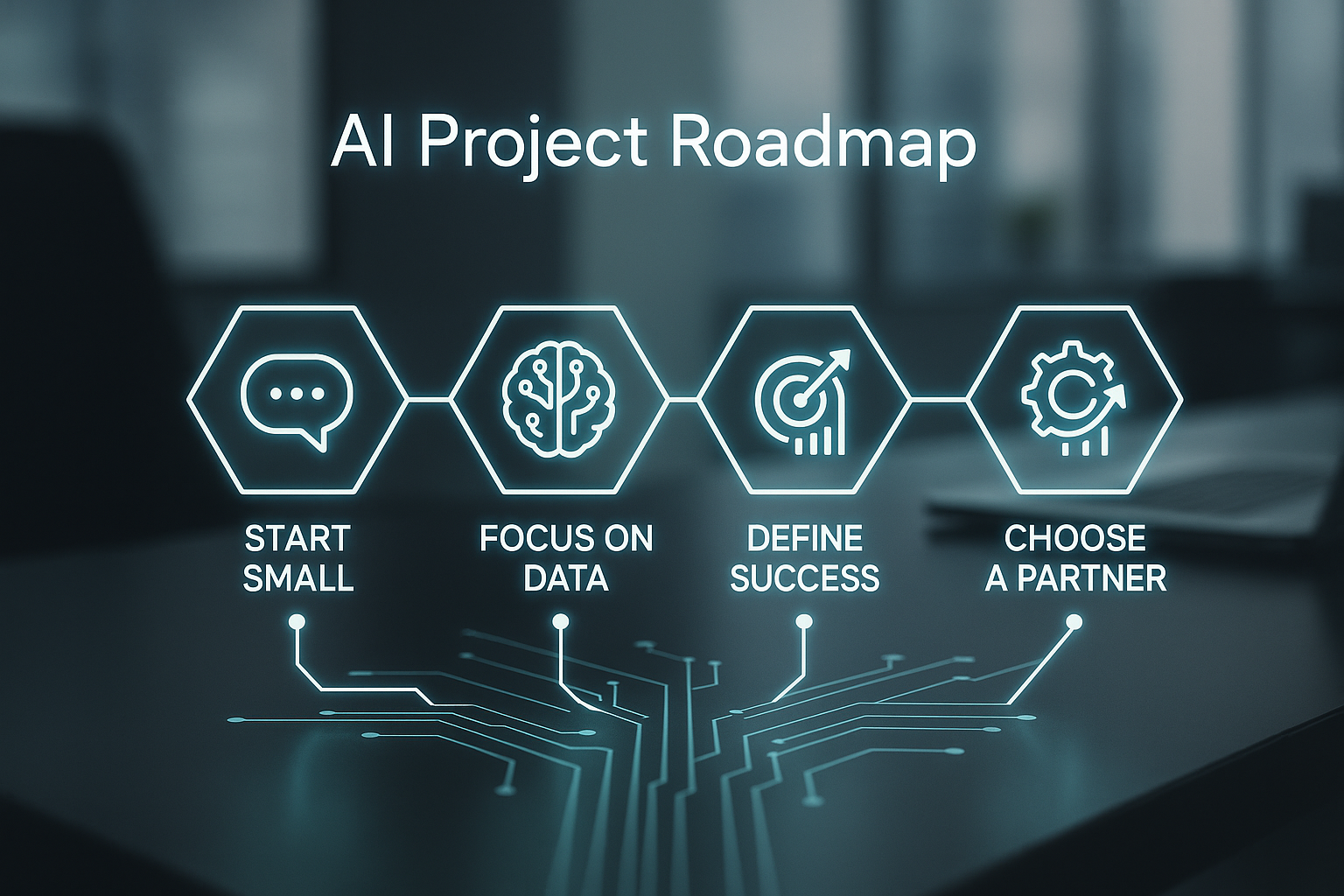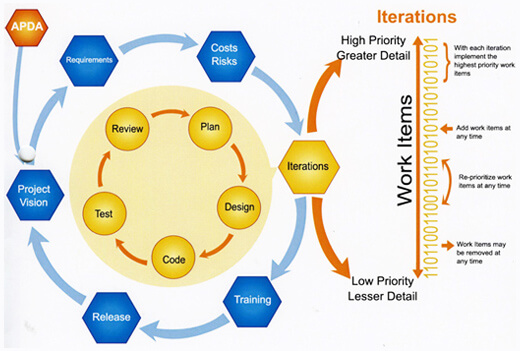Over the last few weeks, we've covered why AI is critical for your business, how to avoid common pitfalls, and how to measure a project's success. Now, it's time to put all that knowledge into practice. Starting an AI project can seem daunting, but it doesn't have to be. The key is to embrace a focused, structured approach.
Here is a simple, four-step roadmap to make your first AI project a success.
Step 1: Start Small with a Focused Pilot Project
The biggest mistake a company can make is trying to solve its largest, most complex problem on day one. AI is inherently experimental, so you need to test the waters first.
Fleshing out the Details:
- Choose a Contained Problem: Pick a business function that has a clear boundary and a manageable scope. Instead of building a comprehensive customer service AI, start with a highly specific task. For example, building a chatbot just for resetting a password or tracking an order status.
- The Power of Early Wins: A successful pilot project is more than a technical validation—it's a trust builder. It demonstrates immediate value to leadership (proving ROI is possible) and to your team (showing AI can be a helpful co-pilot, as discussed in our last article).
- Invaluable Lessons: This initial experiment is where you gain real-world knowledge about your data quality, your team’s readiness, and the true complexity of the problem. These lessons are crucial before you commit significant resources to a larger initiative.
Step 2: Focus on the Data, Not Just the Technology
As we detailed in our article on common mistakes, data is the most critical component of an AI project. The quality and quantity of your data will determine the project's success more than the algorithm you choose.
Fleshing out the Details:
- The Critical Data Audit: The first dedicated phase of any project must be a thorough Data Audit. This is where you and your partner assess the following:
-
- Quantity: Do we have enough examples for the model to learn from?
- Quality: Is the data accurate, complete, and consistent?
- Cleanliness: Is the data labeled correctly? Messy or poorly labeled data will guarantee project failure and save you from major headaches and delays down the line.
- Data Preparation is Development: Shift your mindset: gathering, cleaning, and labeling data is the core development work in the early stages of an AI project. Investing heavily here will prevent continuous headaches later on when the model is in production.
Step 3: Define "Success" Before You Begin
Before you write a single line of code or spend a dollar on development, you must clearly define what success looks like in business terms. This ensures alignment between the technical team and the business stakeholders, which is key to realizing tangible ROI.
Fleshing out the Details:
- Establish a Baseline: As we discussed in our article on measuring ROI, you must know where you are now to measure how far you've gone. If your goal is to reduce customer support agent time, first measure the Average Handle Time (AHT) for that specific task without the AI.
- Set Clear Metrics and Targets: Success should be a number, not a feeling. Agree on specific, measurable targets:
- Efficiency Goal: "A 30% reduction in manual hours spent processing invoices."
- Accuracy Goal: "Achieving a 95% accuracy rate in classifying incoming support tickets."
- Adoption Goal: "A 60% deflection rate for password reset requests handled by the chatbot."
- Focus on Business Value: Ensure the technical metric (like model accuracy) directly ties back to a Business Outcome (like cost savings or increased customer satisfaction).
Step 4: Choose a Partner with a Proven Process
An AI project is an experiment and a continuous process. You need a partner who understands this and won't simply hand off a completed model and walk away.
Fleshing out the Details:
- Look for Transparency: Your partner should be transparent about the experimental nature of the work. They should be prepared for the model to fail in early tests and have a clear process for iterating and pivoting based on those learnings.
- Commitment to the Lifecycle: A reliable partner understands that a model is a living system. Look for a team that is committed to continuous monitoring and improvement after deployment. This includes planning for re-training the model to prevent "data drift" and maintain its accuracy over time—a crucial step we highlighted in our first article.
- A Simple, Repeatable Framework: Choose a partner who has a clear, repeatable process for scaling successful pilots into larger, enterprise-wide solutions, ensuring your initial success can be built upon.
By following this simple roadmap, you can make your first AI project a success and lay the foundation for a future where your business thrives on the power of artificial intelligence. If you're ready to get started, contact us to see how we can help.




